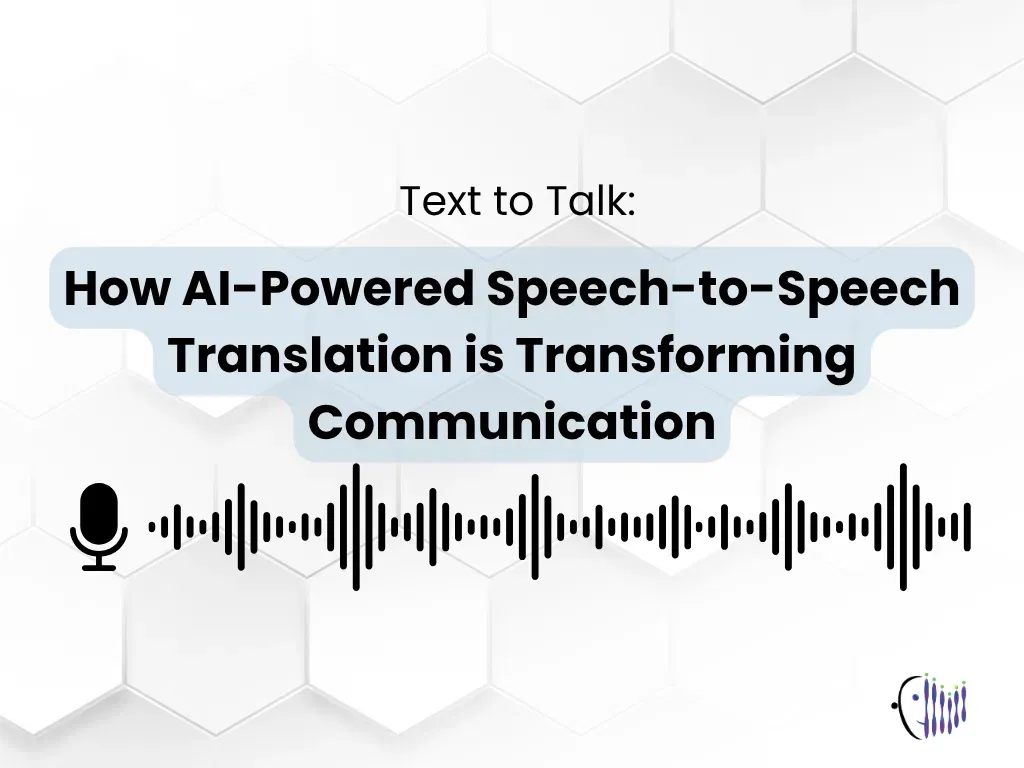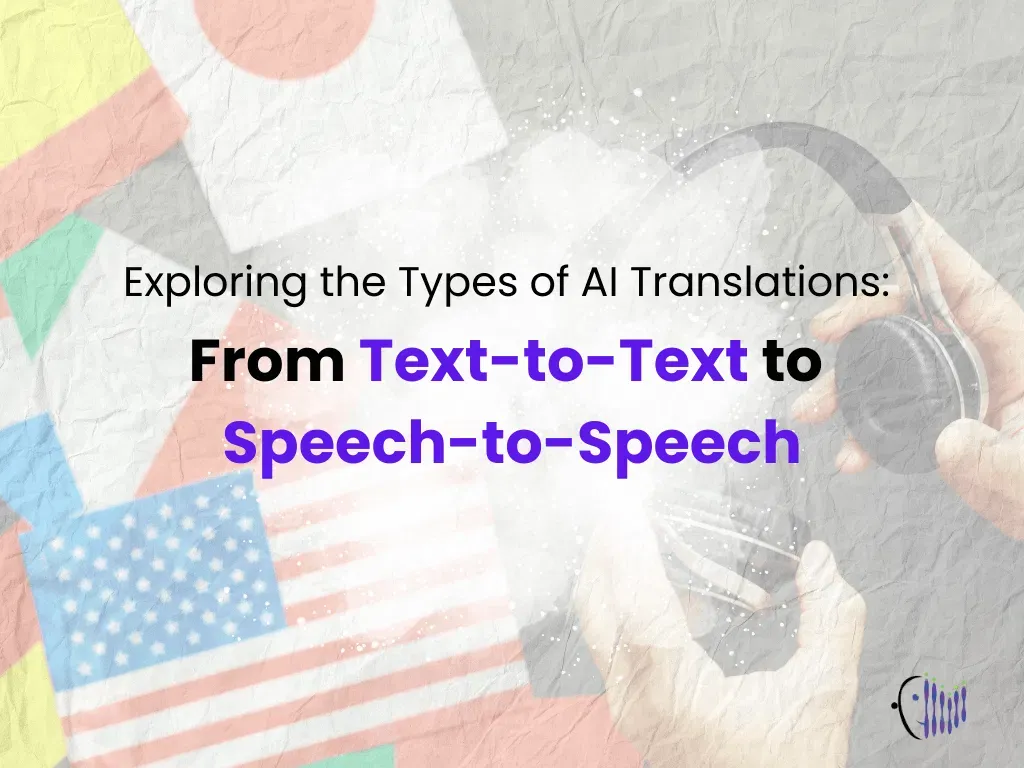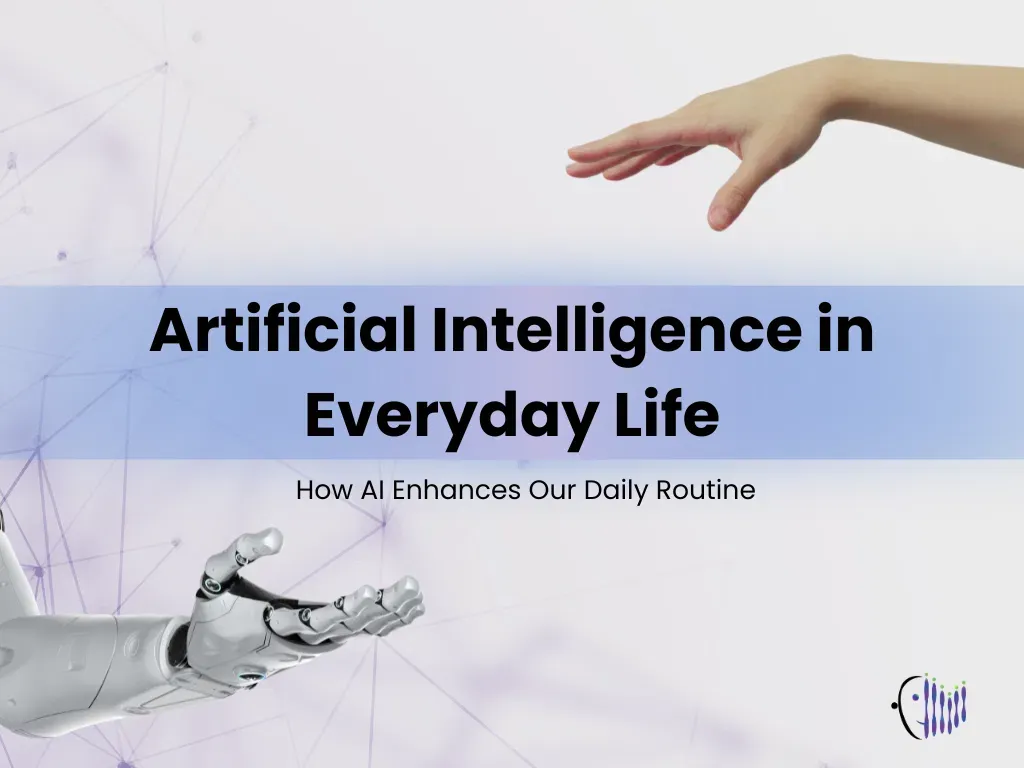In today’s interconnected world, communication knows no boundaries. But one major obstacle remains: language.
To address this challenge, experts have been working tirelessly to create technology that breaks down language barriers, allowing people to understand messages across diverse languages.
However, much of this progress has been limited to written text.
But what about spoken communication? The dream of having natural, real-time conversations in multiple languages has long captivated linguists and technologists alike.
Thanks to advancements in Artificial intelligence (AI), this vision is now becoming a reality through speech-to-speech translation. This groundbreaking innovation is transforming how we communicate, paving the way for smoother and more seamless global interactions
In this article, we’ll delve into the development of speech-to-speech translation, its importance in promoting inclusivity and accessibility, and how VideoTranslatorAI leads the way with innovative solutions.
What is Speech-to-Speech Translation?
Speech-to-speech translation (S2ST) is a technology that enables spoken words in one language to be translated into another in real-time.
Unlike traditional text-based translation tools, this innovation uses artificial intelligence (AI) to process spoken language and deliver translation audibly,
This allows people to communicate naturally across different languages, breaking down barriers that once made global conversation challenging.
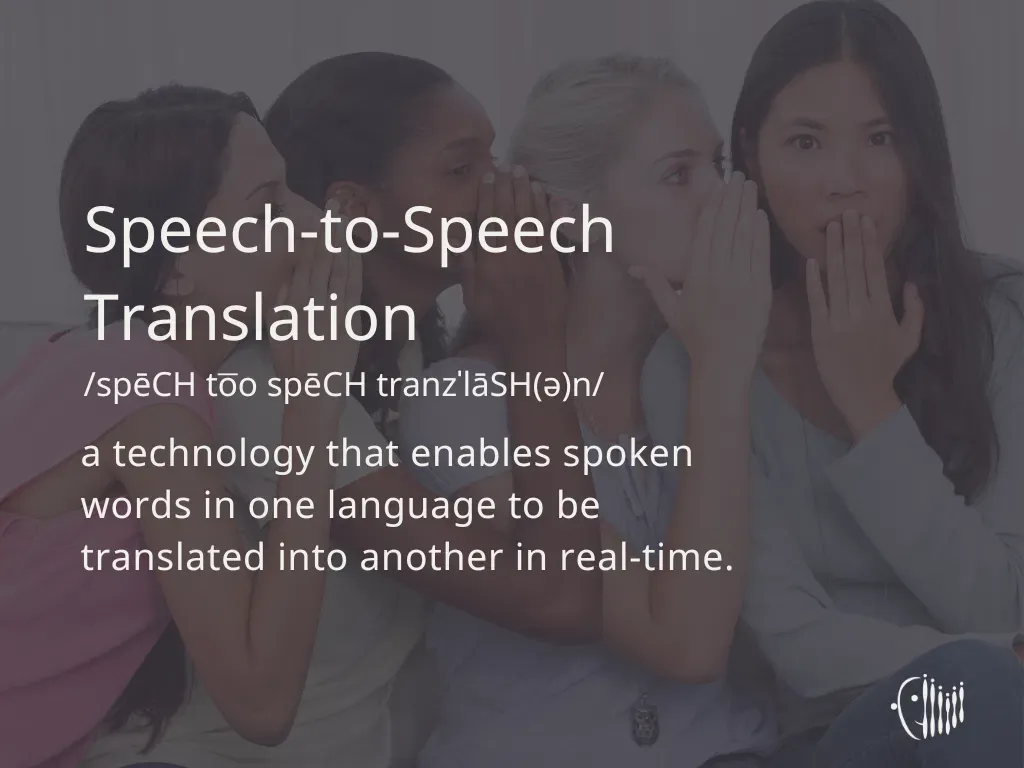
The idea of converting spoken language into another language has been introduced previously. Early prototypes of speech-to-speech translation appeared in the late 20th century, primarily in research labs (Seligman and Waibel, 2019)
However, the technology started gaining traction in the early 2010s with the rapid advancements in AI, machine learning, and natural language processing (NLP).
One of the pivotal moments for speech-to-speech translation was the development of smartphones and cloud-based AI.
These innovations enabled more sophisticated processing power and better access to linguistic data, allowing apps and devices to perform real-time translations.
Learn about AI translation types: Exploring AI Translation Types: From Text-to-Text to Speech-to-Speech
Why We Need Speech-to-Speech Translator
There are some reasons why a speech-to-speech translator is needed:
Overcoming Literacy Challenges
Language barriers are particularly challenging for individuals with limited literacy skills. Older generations and those facing literacy difficulties often cannot depend on written translations for effective communication. Speech-to-speech translation can address this issue by allowing them to comprehend spoken language without requiring the ability to read.
Supporting Blind and Low-Vision Communities
Written translations, such as subtitles or instruction manuals, can be inaccessible for the blind or those with low vision. Speech-to-speech translation provides an alternative by delivering real-time voice translations, ensuring the user can fully engage with spoken communication in various contexts.
Promoting Inclusivity Through Accessibility
By addressing challenges tied to literacy and visual impairments, speech-to-speech translation fosters a more inclusive environment. It empowers individuals to participate in conversations, access vital information, and connect with others, regardless of their language or communication barriers.
Moreover, the applications of speech-to-speech translation extend far beyond specific use cases. It enables communication in:
Community Services Helping older immigrants and individuals with visual impairments navigate healthcare, government services, or community events without needing interpreters or written guides.
Education or Training Supporting individuals who rely on auditory learning methods or face difficulties in reading.
Personal Relationships Bridging communication gaps between family members who speak different languages, ensuring everyone feels included.
Speech-to-speech translation gives a voice to those often left behind, creating opportunities for deeper understanding and meaningful interaction across diverse communities.
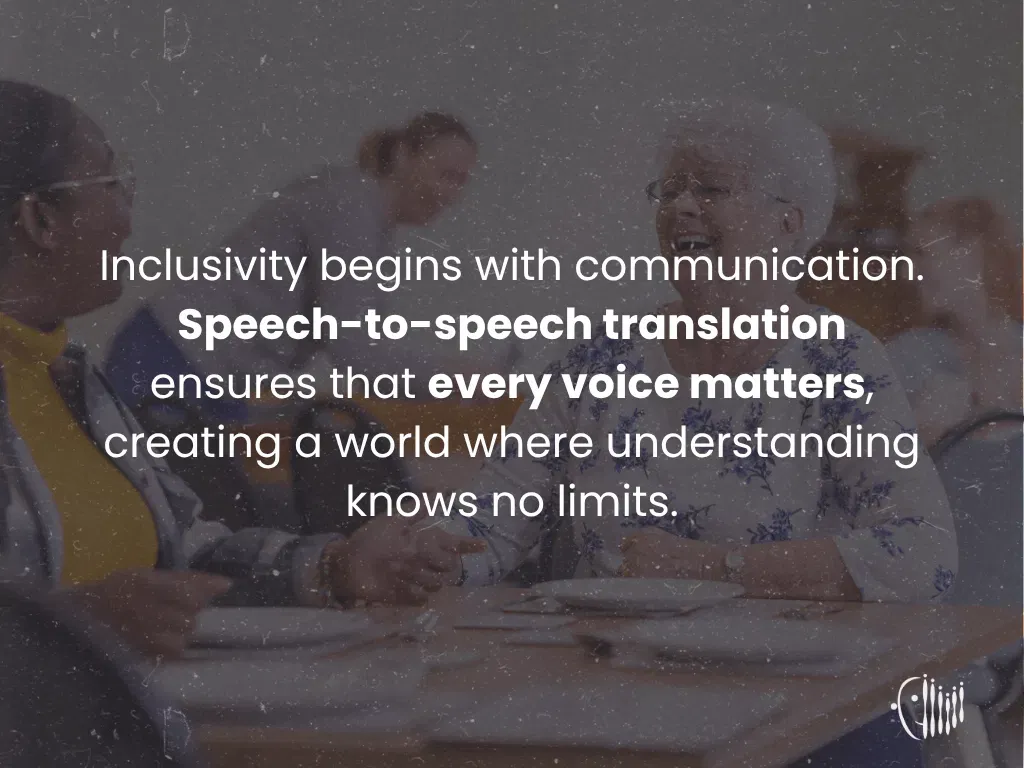
How Does AI Perform Speech-to-Speech Translation?
The magic of speech-to-speech translation lies in how AI processes language step by step.
Step 1: Transcription
The AI listens to what you say and turns it into written text (speech-to-text).
Step 2: Translation
The transcribed text is translated into the target language using AI-powered translation models (text-to-text).
Step 3: Voiceover
The translated text is transformed back into spoken words in the target language, often with a synthetic voice that may include emotional tones (text-to-speech).
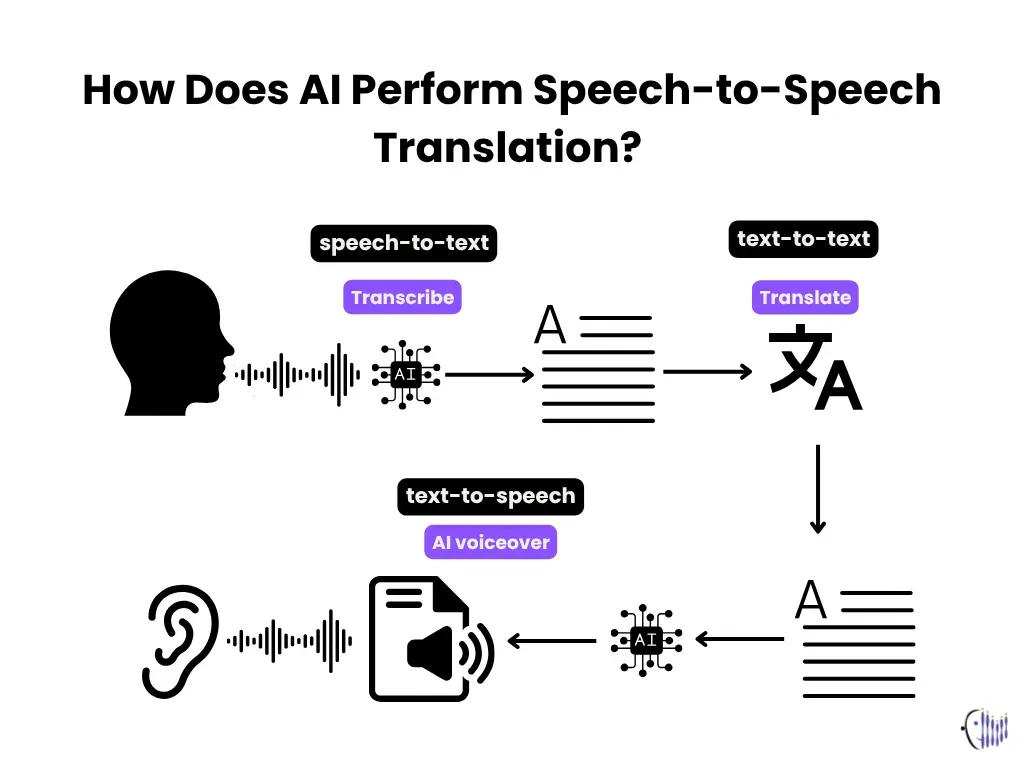
What We’re Developing at VideoTranslatorAI
At VideoTranslatorAI, we’re redefining the possibilities of speech-to-speech translation.
Our flagship product, a multilingual videoconferencing tool, is designed to make real-time multilingual communication as effortless as speaking to a friend.
The key features of VideoTranslatorAI’s multilingual videoconferencing tool include:
1. Support over 10 Languages
Whether you’re hosting a meeting with international colleagues or discussing education with parents abroad, our tool enables accurate translations across a wide linguistic spectrum.
Our app now speaks 11 languages fluently—English, Mandarin, Cantonese, Arabic, Vietnamese, Punjabi, Greek, Korean, French, Croatian, and Indonesian. But we’re just getting started! Stay tuned as we add even more languages to the mix!
2. Real-Time Voice Over Capability
What sets our technology apart is its voice-over feature. The AI does not just translate–it speaks the translation aloud using synthetic voices, making the conversation feel authentic and personal.
3. Integrated Dictionary for Enhanced Accuracy
Our tool incorporates a built-in dictionary to ensure precise translations, especially for culturally nuanced or hard-to-translate words. This feature helps users understand the meaning behind specific terms, bridging linguistic and cultural gaps.
4. Intuitive User Interface
The platform is familiar and user-friendly, designed to resemble popular videoconferencing tools. This ensures a seamless experience without steep learning curves.
VideoTranslatorAI’s multilingual videoconferencing tool empowers users to connect and communicate meaningfully, regardless of language differences, whether for professional meetings, personal conversations, or community engagements.
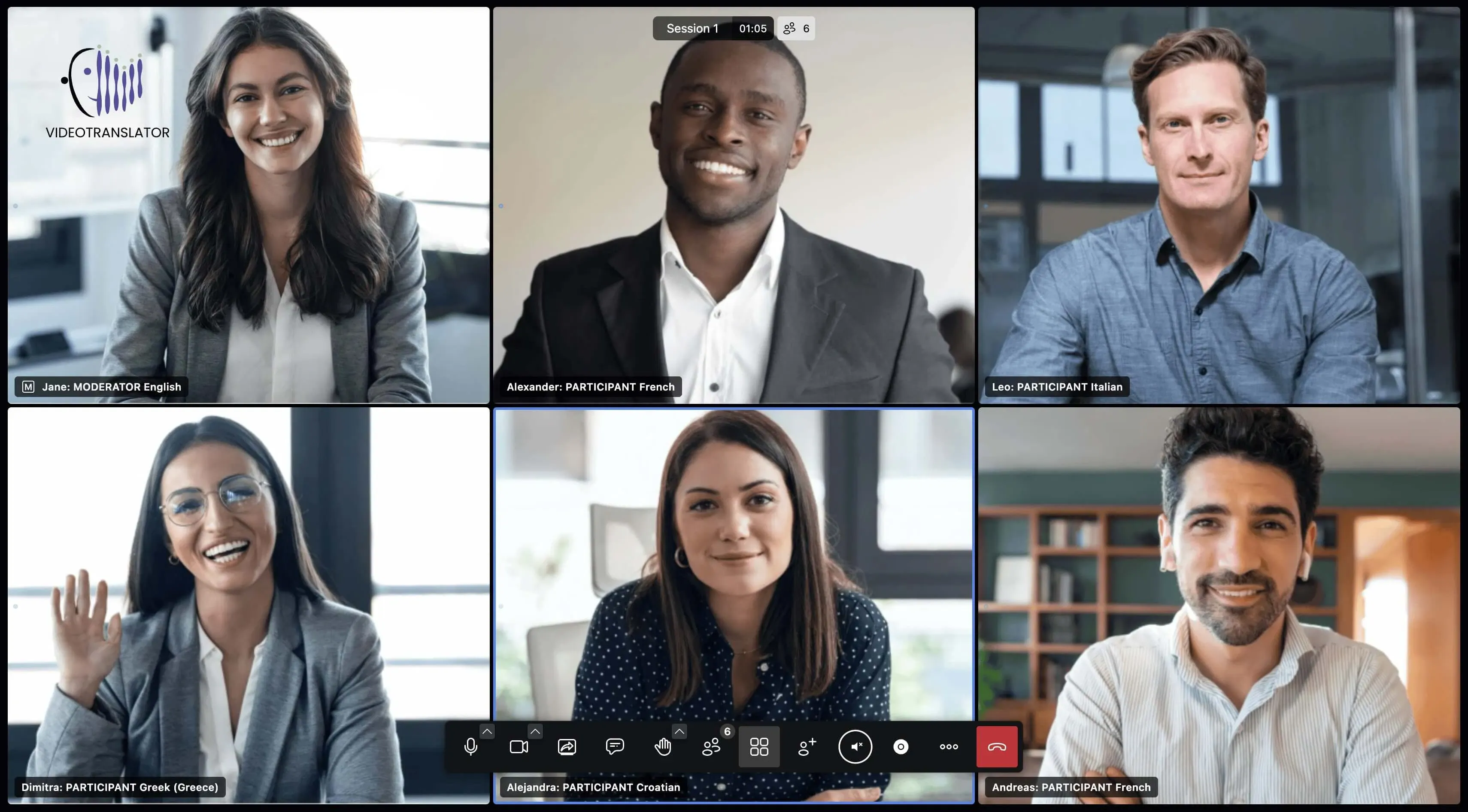 Any language, One conversation.
Any language, One conversation.
Conclusion: Connecting the World Through Speech
The advent of speech-to-speech translation marks a significant milestone in AI-driven communication technology.
By breaking down language barriers, this innovation has the power to connect people in ways we once only dreamed of.
It’s more than convenience–It’s a step toward a world where every voice can be heard and understood.
At VideoTranslatorAI, we’re proud to be at the forefront of this revolution, creating tools that make communication possible and impactful.
Imagine a world where language differences no longer stand in the way of collaboration, understanding, and connection. That world is closer than ever.
Join us as we explore the exciting journey of speech-to-speech translation and its impact on the way we communicate.
If you have any questions, click here or contact us at hello@videotranslator.ai.
See you!
Also read: Exploring AI Translation Types: From Text-to-Text to Speech-to-Speech
